Ready to dive into woodworking but unsure what tools you’ll need? Let’s embark on a journey to uncover the essential hand tools that will turn a novice into a master craftsman!
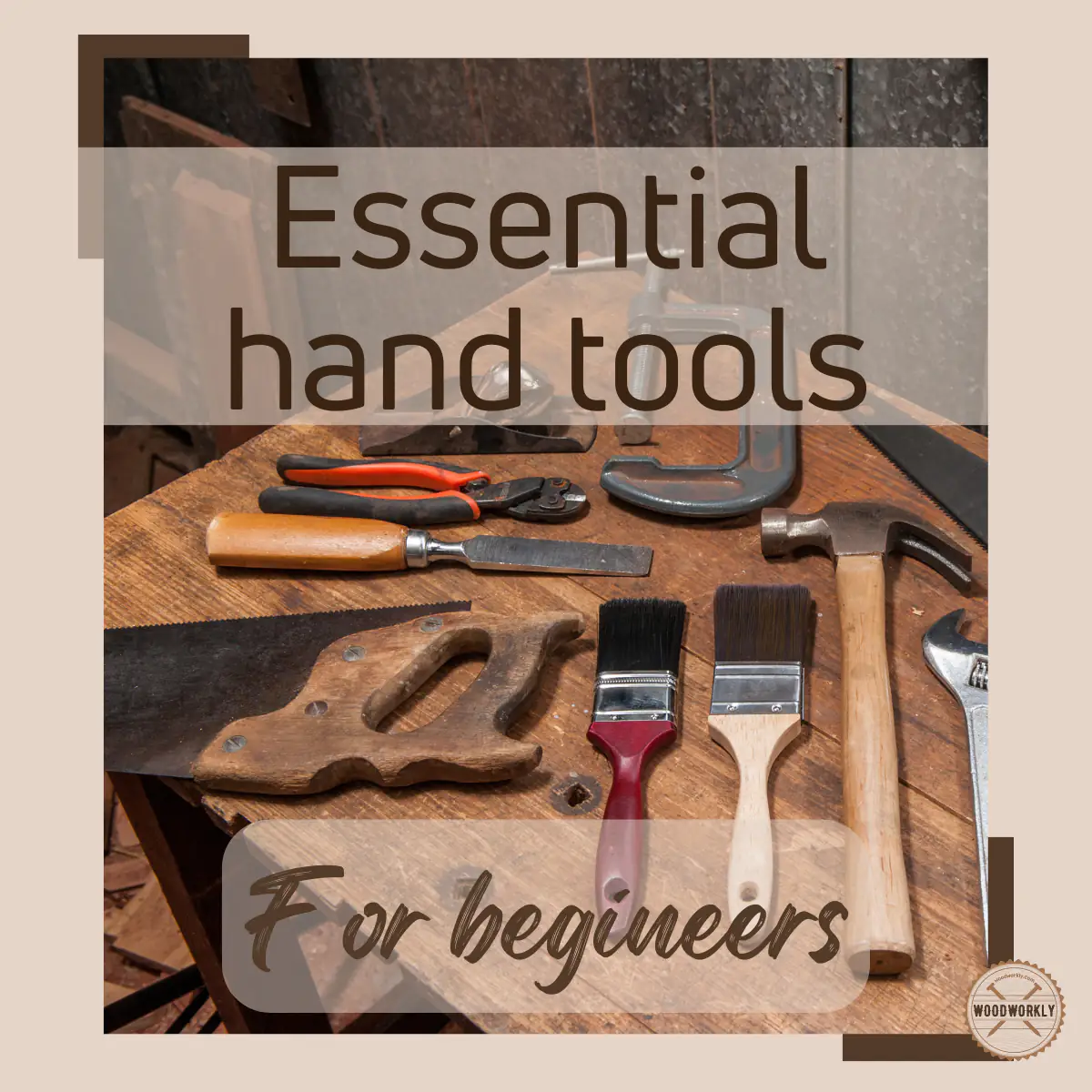
Every woodworking expert was once a beginner. Deliberate practice makes you a woodworking expert.
In woodworking, we use hand tools and power tools to get the exact result we want.
Even though power tools are more efficient and easier than hand tools, better to practice with hand tools to get a good experience especially when you’re a beginner.

As a beginner, hand tools are so important to learn woodworking tips, techniques all other basic things about woodworking than power tools.
When I was a beginner, I wondered what hand tools do I really need to start woodworking.
So, I have researched, and Here’re the essential beginner woodworking hand tools,
- Ripping handsaws
- Crosscut handsaws
- Combination handsaws
- Backsaws
- Carcass handsaws
- Coping handsaws
- Dovetail handsaws
- Keyhole handsaws
- Marking gauge
- Clamps
- Jack planes
- Block planes
- Joining planes
- Rabbet planes
- Scraper planes
- Spokeshaves
- Finishing hammers
- Framing hammers
- Tack hammers
- Hand files
- Mallet
- Chisel set
- Sharpening tools
- Squares
- Tape measures
So, in this article, we’ll go through beginner woodworking hand tools separately and discuss their functionality and how much they’re important in woodworking to get to know about woodworking skills and techniques.
At the end of this article, you’ll be able to figure out which tools you should buy first according to the type of your woodworking project.
Because the types of woodworking tools you need to have before starting the project depend on the type of woodworking project.
So, let’s jump in!
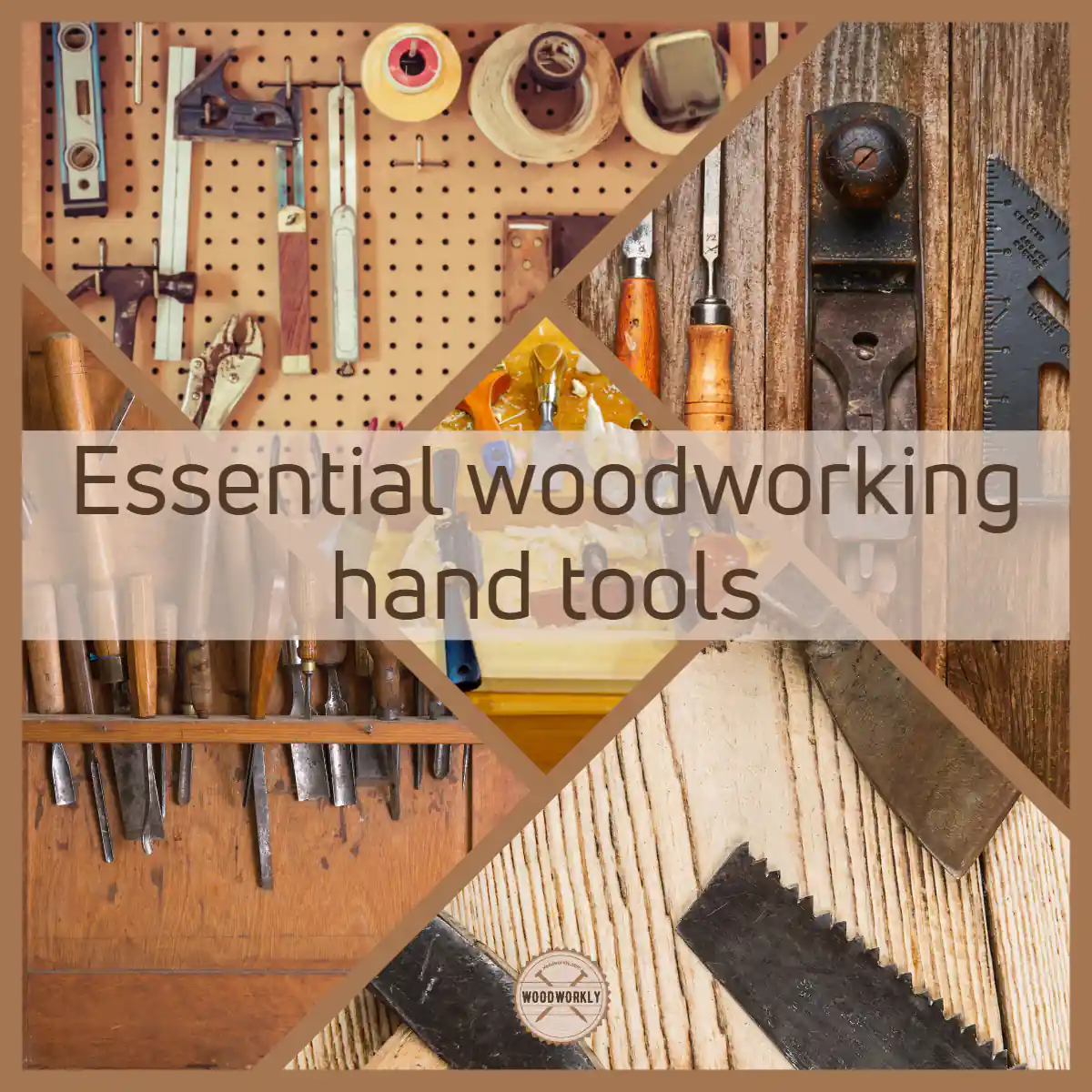
This post contains affiliate links. As an Amazon Associate, I earn from qualifying purchases. I endorse only products I truly recommend. If you make a purchase using one of these links, I may receive compensation at no extra cost to you. For more information, see my disclosure policies.
Best Hand Woodworking Handtools for Beginners
So, let me explain the hand tools that I currently use which are great for beginners who are starting woodworking as a hobby or as a business.
Just keep reading!
1. Ripping Handsaws
Handsaws are considered the most basic woodworking tool every woodworker has.
Among different types of handsaws, the ripping handsaw is the one that woodworkers mostly used.
It is nearly 26 inches in length with 5 teeth-shaped blades per inch.
A ripping handsaw is also known as a tooth saw because teeth-shaped blades alternate between left and right bending sides.
It can be cut parallel along the direction of the wood grain.
Ripping a handsaw is so simple and easy to use when precision cuts are required. They are cheap and provide excellent results.
Most importantly, ripping handsaws are versatile and helpful for beginners to learn how to make cuts and get the shapes they want from wood pieces.
The blades of the ripping handsaw are evenly placed.
When you’re using a ripping handsaw make sure to hold the wood firmly to avoid wood movements during cutting.
Here’re some useful functions of ripping handsaw,
- Able to cut preciously with the wood grain.
- Can make clean cuts with push strokes along the wood grain.
I highly recommend ripping handsaws as a beginner woodworking hand tool because of its multifunctional capabilities.
Here is the rip handsaw that I’m currently using basically for most of the projects.

2. Crosscut Handsaws
Crosscut handsaw is also known as rip-cut handsaw. Crosscut handsaws are important to cut across the wood grain.
It has teeth-shaped blades that are positioned backward with bevel edges.
When cutting both push and pull strokes happen to make a clean and accurate cut.
If you want to cut a wood log perpendicular to its wood grain, a crosscut handsaw is the best tool you should go with.
The blades of the crosscut handsaw are staggered.
As a beginner in woodworking, there’re occasions you face cut with wood grain and cut across the wood grain.
To cut with the wood grain you need to have a ripping handsaw and to cut across the wood grain you need a crosscut handsaw.
As you can see different woodcutting techniques need different equipment.
Here’re some useful functions of crosscut handsaw,
- Able to make a clean and accurate cut across the wood grain.
- Can make cuts with both push and pull strokes.
Crosscut handsaws are easy to sharpen and breasted blade edges and taper ground improve its performances.
Here is the crosscut saw that I’m using now. It’s accurate, and easy to handle.

3. Combination Handsaws
The combination handsaw is a multifunctional handsaw that can do both crosscuts and rips. That means using a combination handsaw you do the tasks of both ripping handsaw and crosscut handsaw.
The combination handsaw has a flexible, thin blade with a rigid back to handle well.
The blades of the combination handsaw are equipped with both layouts which are evenly placed and staggered.
If you’re a beginner in woodworking and tight on a budget better to go with the combination handsaw rather than spend money for both ripping and crosscut handsaws.
Because with a combination handsaw, you’ll be able to kill two birds with one stone.
Here’re some useful functions of a combination handsaw,
- Able to make clean, precious, and accurate cuts both across the wood grain and along the wood grain.
- Can make cuts with both push and pull strokes.
Tip: As a woodworker, you need to know the Points Per Inch (PPI) value of the handsaw along the blade.
- If the PPI value is high that means a higher number of teeth which are helpful to give clean, slow, and fine cuts.
- If the PPI value is less that means a lower number of teeth which are helpful to give aggressive, less fined, and faster cuts.
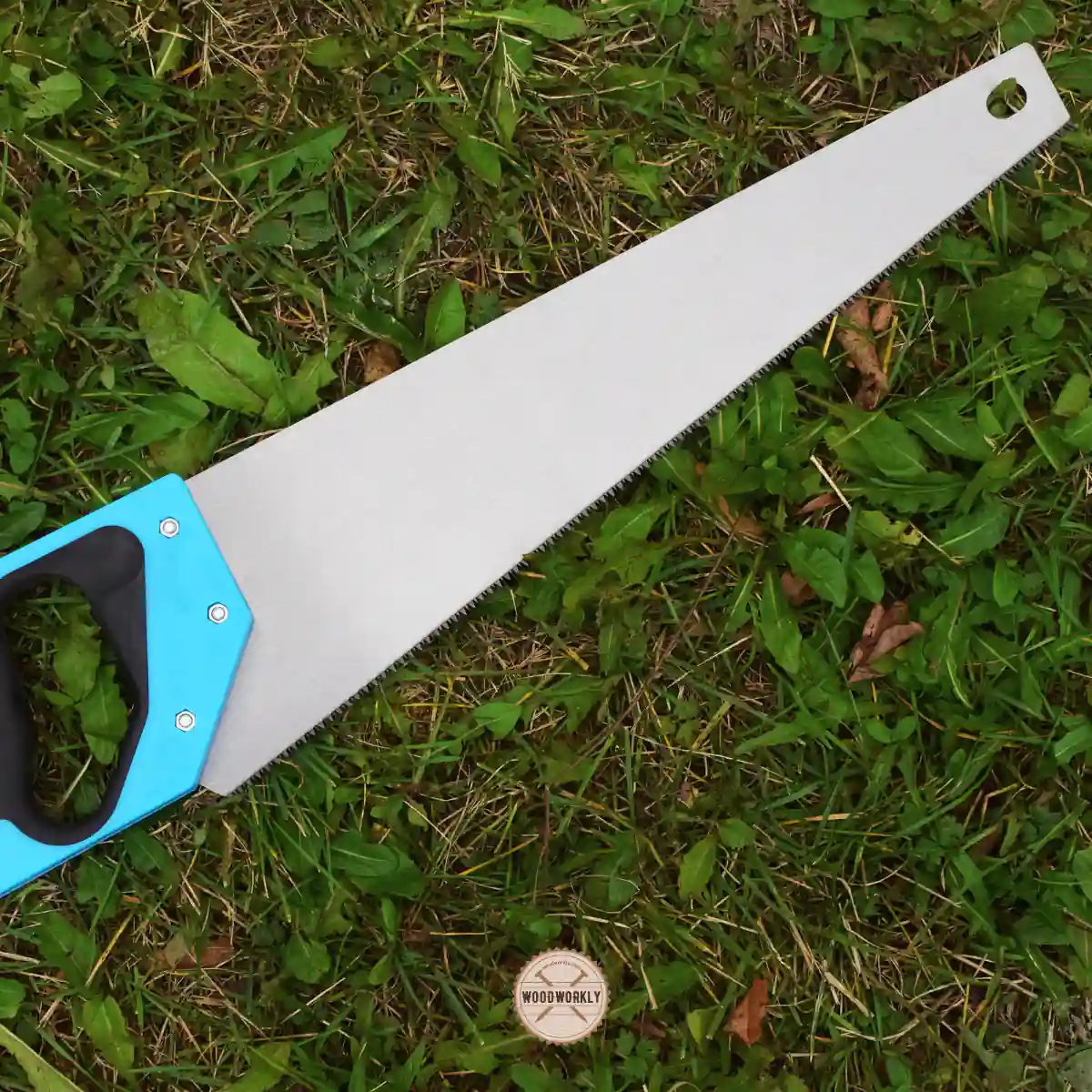
4. Back Saws
Back saws have thin metal blades with fine teeth that run along the top of the saw blade which is useful to make clean slow and fine precious cuts.
Back saws are important when making wooden joints because of their fine accurate functionalities.
The tooth configuration of the backsaws can change the job of the saw. It has rectangular-shaped blades with braced backs that can use for milter cuts.
Here’re some useful functions of a combination handsaw,
- Able to make a clean, precious, and accurate cut due to fine teeth.
- Useful when making wooden joints
Here is a high-quality back saw that I personally recommend.
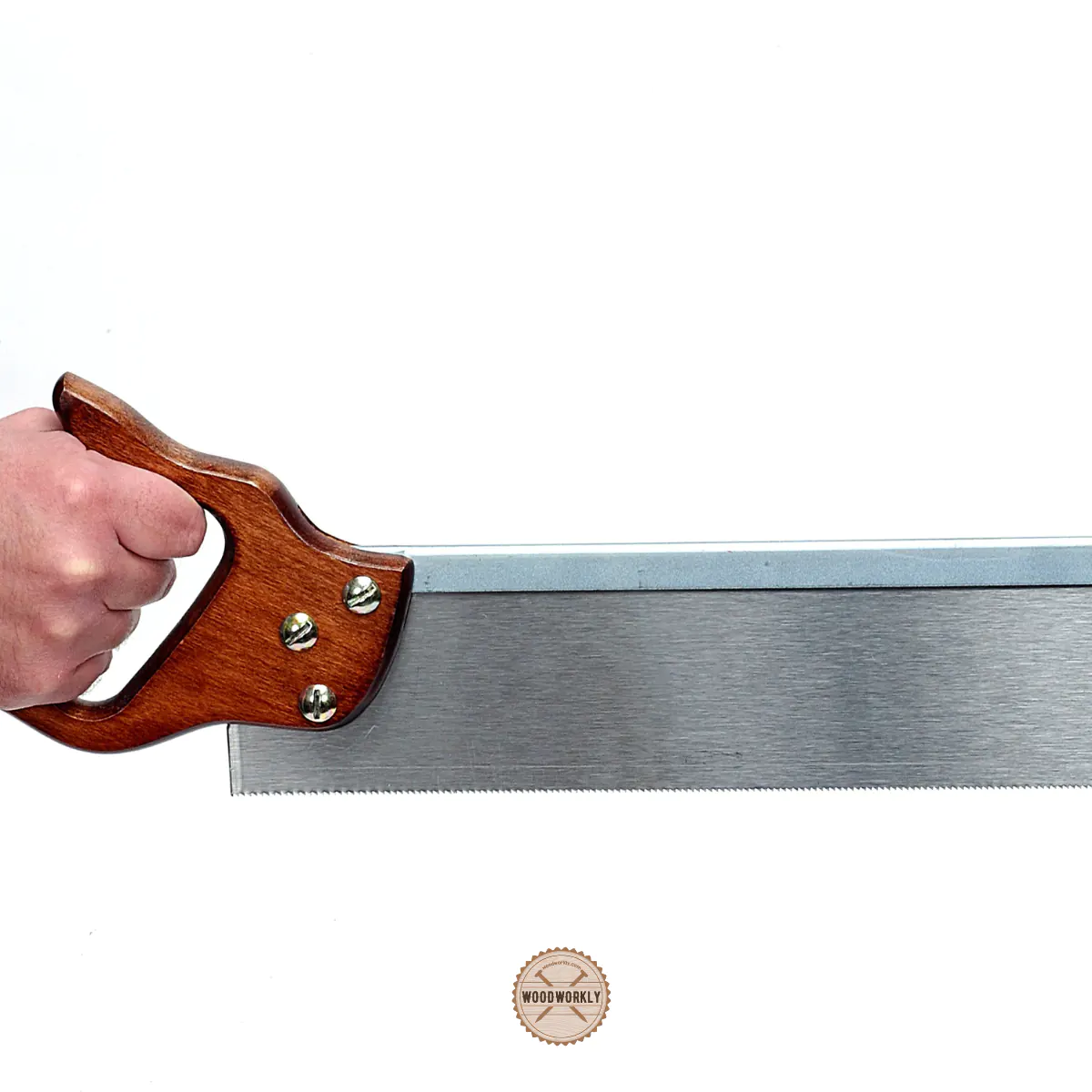
5. Carcass Handsaws
Carcass handsaw is mostly used to make furniture carcasses. Carcass handsaws are also kind of backsaws that are larger and stronger than regular backsaws.
As a beginner carcass handsaw will serve you best.
The carcass saw is 11”-14” long and has a PPI value of 14-16.
The carcass handsaw is a crosscut field saw with a pretty good amount of depth and length. It is useful when cutting tenons, dovetails, and everything in between.
Both hardwoods and softwoods can be cut with a carcass saw with 250 hang angle.
Here’re some useful functions of a combination handsaw,
- Useful for cutting small boards, miters, and anything in between.
- Useful when making wooden joints
- All other general uses of the workbench
Carcass handsaw is not good enough for fine cuts, but it serves best to make deeper cuts.

6. Coping Handsaws
A coping handsaw is considered one of the most affordable handsaws (under $20), especially for beginners.
It is used for removing waste from dovetail joints and for rough cutting in the boards.
The handle is comfortable and you can get fine cut with its sharp blades.
But the cutting speed is slow and won’t buckle under a decent amount of tension. Therefore, the handsaw won’t jump off the kerf at the end and won’t damage the pin or tail.
It comes with a pack of replaceable blades which are useful and cheap. Because of having tall frame and thin blade, the coping saw is good for cutting curves.
The waste that occurred because of the chisel can be removed by using a coping handsaw.
Here’re some useful functions of a combination handsaw,
- Useful for curve cuttings in small boards.
- Useful for removing waste from dovetail joints.
- Able to make cuts with pull strokes.
Here is the coping hand saw I currently use and recommended by experts.
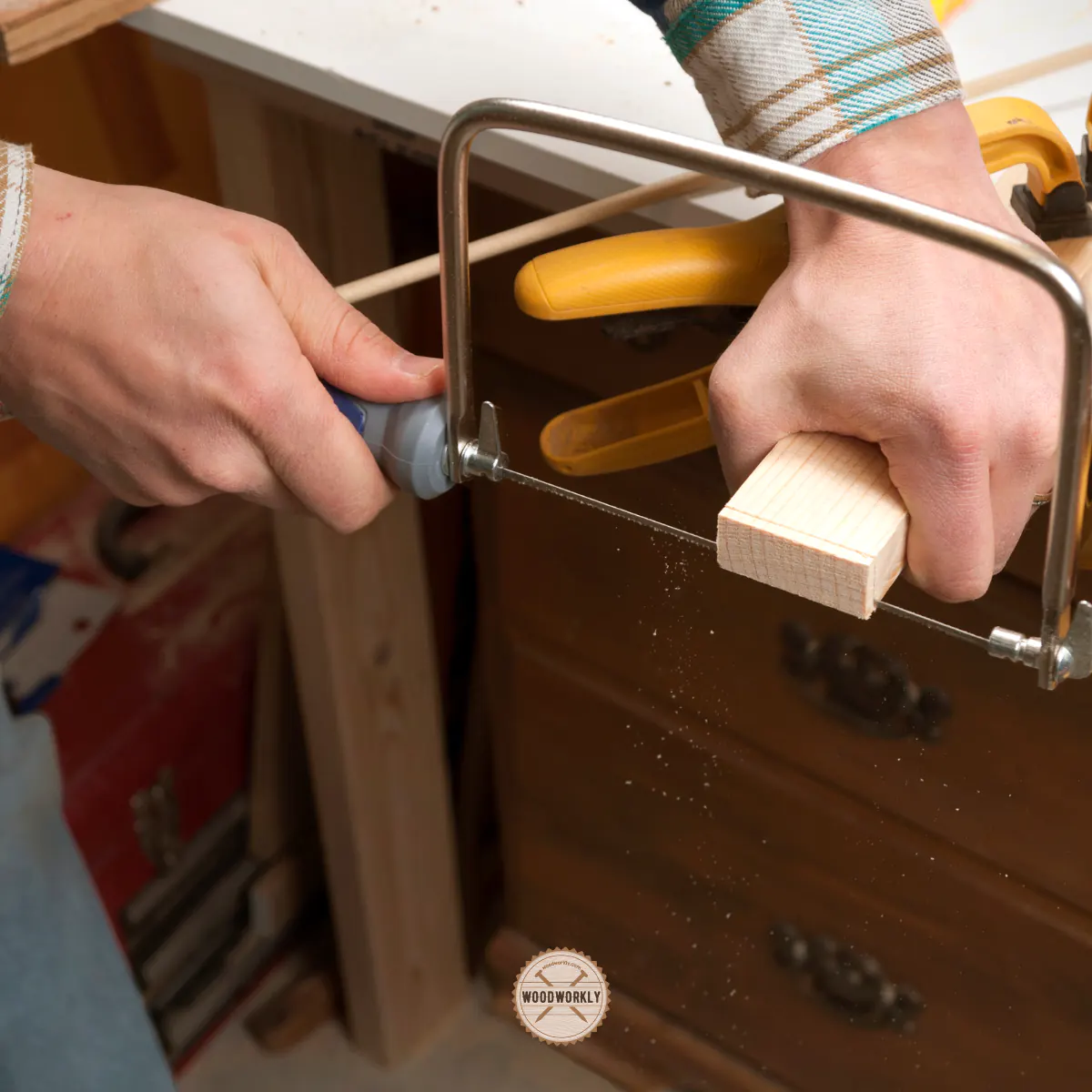
7. Dovetail Handsaws
Dovetail handsaws are used to make hand-cut dovetails and many other woodworking tasks such as notching a drawer or shelf to fit in a dado on a case side.
If you’re on a tight budget dovetail handsaw is well enough for a while.
With a dovetail handsaw, you’ll be able to cut joinery along the direction of the wood grain. It has fine rip teeth that use to cut dovetails by hand.
The dovetail saw is equipped with a solid brass back with the finest steel blade. The dovetail saw has a PPI value of 15.
The first thing you need to know is how to handle the dovetail saw.
Many people wrap all their fingers around the handle which is an incorrect method.
The proper method is to wrap the middle, ring, and warp little fingers around the handle with a forefinger along with the brass back.
This method is a very comfortable and natural way of handling the dovetail saw.
Before you directly head into a large project, it’s a wise idea to start with some scrap wood to practice saw cutting.
After you learned the proper sawing technique, you’ll be able to make smooth cutting with ease.
Here’re some useful functions of the dovetail handsaw,
- Able to make small precise cuts that are extremely neat
- Use for joint making
- Have good control and handling than many other handsaws.
This Doveail saw is what I use now and I have two of them in my workshop. That’s how handy it is!

8. Keyhole Handsaws
Keyhole handsaw is also known as a compass saw which is useful for cutting holes in softwoods. It has a small, pointed blade that can also use to cut holes in a wall to install a new switch.
The specialty of a keyhole saw is various blades can be fitted such as 5 to 15 inches.
Keyhole handsaw has about 5 to 20 points per inch (PPI) and 8 to 10 points per inch models are the common ones.
To cut using a keyhole handsaw move the saw forward and backward slowly through the line.
Never apply excess pressure because the blade may be jammed and make it difficult to remove.
Keyhole handsaws are inexpensive but sharpening costs more than you expect.
Here’re some useful functions of the dovetail handsaw,
- Use to make internal cuts
- Use to cut small shapes, as piercing material
- Use to make holes in drywall, boxes, pipes
- Able to make small openings
Here is the keyhole saw that I personally recommend to anyone.
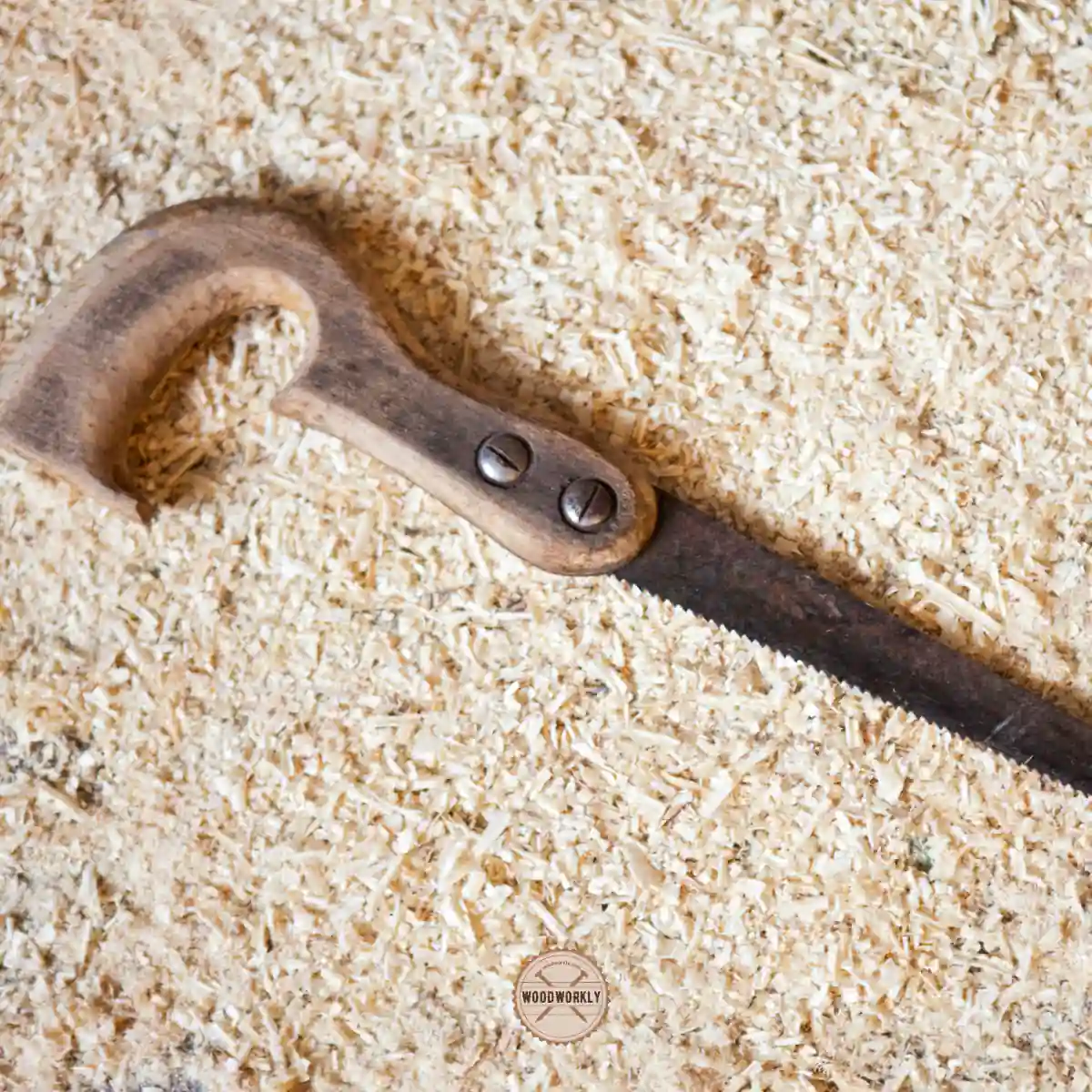
9. Marking Gauge
Making gauge is a basic woodworking hand tool that is available in every woodworker’s kit.
There’re several marking gauges available in the market which use for different purposes.
- Traditional marking gauge
The traditional marking gauge is inexpensive and really useful for joinery tasks. It uses a pin to work on the surface.
- Cutting gauge
The cutting gauge uses a knife to work on the surface. It is useful to make clean cuts without tearing off the surface.
The cost is a little bit higher than the traditional marking gauge.
Basically, every type of marking gauge is worthful to maintaining the wood steady until the job is done.
Well-sharpened gouges are useful to make parallel lines to show exactly where the flat wood needs to be cut.
Here’re some common functions of marking gauges,
- Able to make precise lines
- Make the woodworking cuttings much easier
- Useful for both experienced and beginner of woodworkers
Here is the marking gauge kit that I personally use.

10. Clamps
Clamps are useful to hold joints that are freshly glued. 10 – 12 inches clamps are perfect to hold most of the joints.
Clamps are useful until you learn how to not use them.
With experience, you’ll learn to do things without using any clamps. Until then having G-clamps, and F-clamps are useful to learn many woodworking stuff.
For big projects, ¾ inch 4 high-quality clamps are recommended. Most of the clamp sets are inexpensive and work like a third hand when holding boards together especially when you’re drilling or screwing.
Here’re some common functions of clamps,
- Useful to hold glued joints
- Useful when drilling and screwing
- Essential woodworking hand tool for every beginner in woodworking
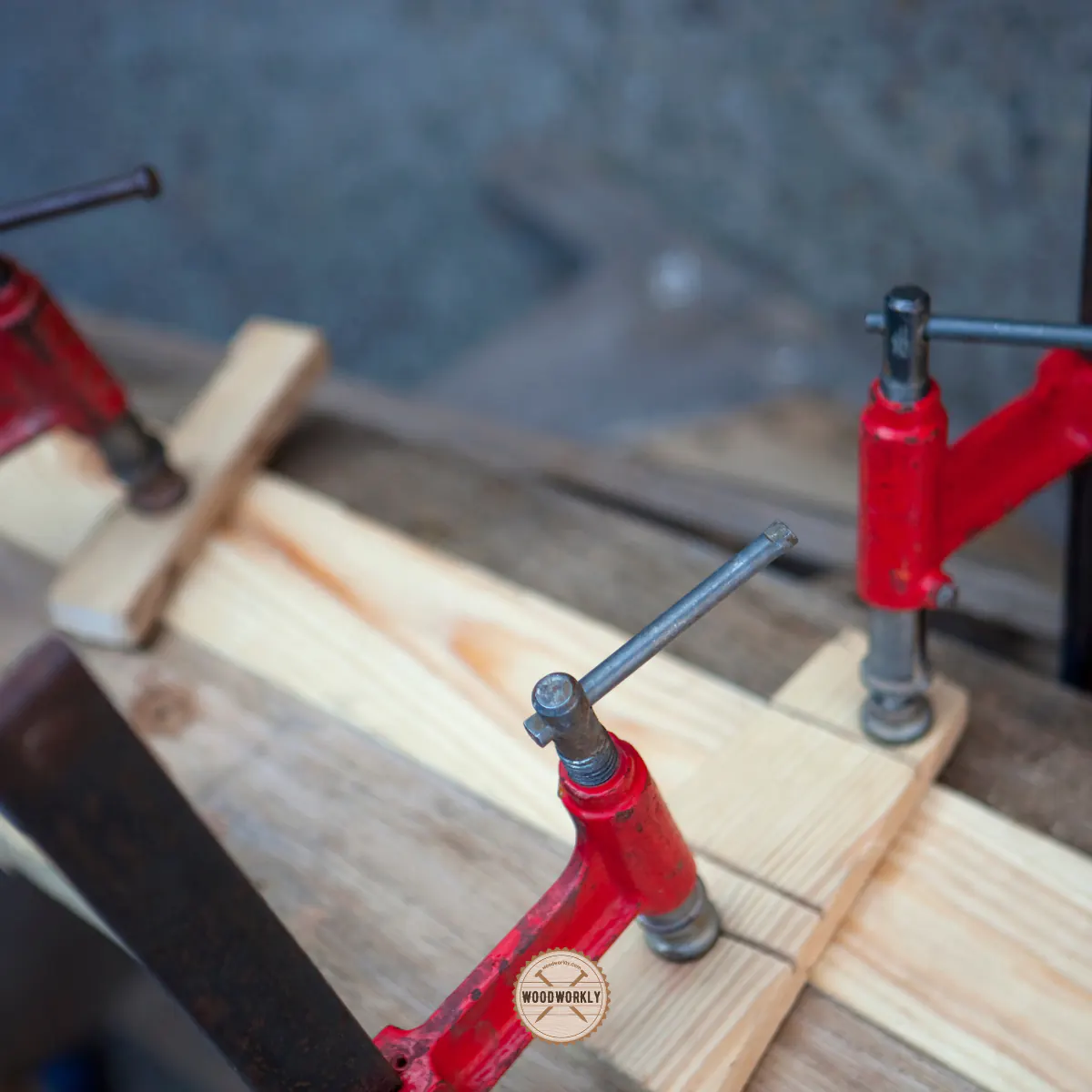
11. Jack Planes
Planes are used to cut rather than sand or abrasing. There’re several types of planes available in the market.
All the planes have a fixed blade to shave off the wood fibers to make them smoother.
Planes can be categorized according to their application.
Every beginner of woodworking should know the applications of each plane type to use them correctly during their woodworking projects.
When it comes to jack planes, they have both curved and straight edges which are useful when jointing or smoothing the wooden surfaces. Blade size is a matter of fact that can understand how many materials can be removed at a time.
Jack planes are also useful to flatten rough wooden surfaces and shape them until it reaches their final size.
The low-angle jack plane is lighter and easier to use.
If you’re a beginner in woodworking I highly recommend low-angle jack plane rather than a conventional bench plane because of its great handling.
The mouth opening is also easy to adjust than other types of planes.
Here’re some common functions of jack planes,
- Jack of all trades useful when shaping and jointing
- Provide maximum support of cutting edge
- Able to make deep cuts by removing the stock
Read to know Jack Plane Vs Smoothing Plane: What’s The Difference?

12. Block Planes
The block plane is used to make clean and small shavings for joinery and woodturning.
It is perfect for the tabletop edges, the chamfering, and the fine-tuning of wood drawers.
Most importantly the mobility of block planes is high because they can carry around your belt.
The 6-inch low-angle block plane is so useful for slicing. Block planes are stout and small.
Low-angle block planes are more versatile than other types of block planes because of their great performance in a small space.
Here’re some common functions of block planes,
- Useful for tight work
- Able to make small clean cuts
- Useful in woodturning and making smooth joints
- Able to trim wooden surfaces
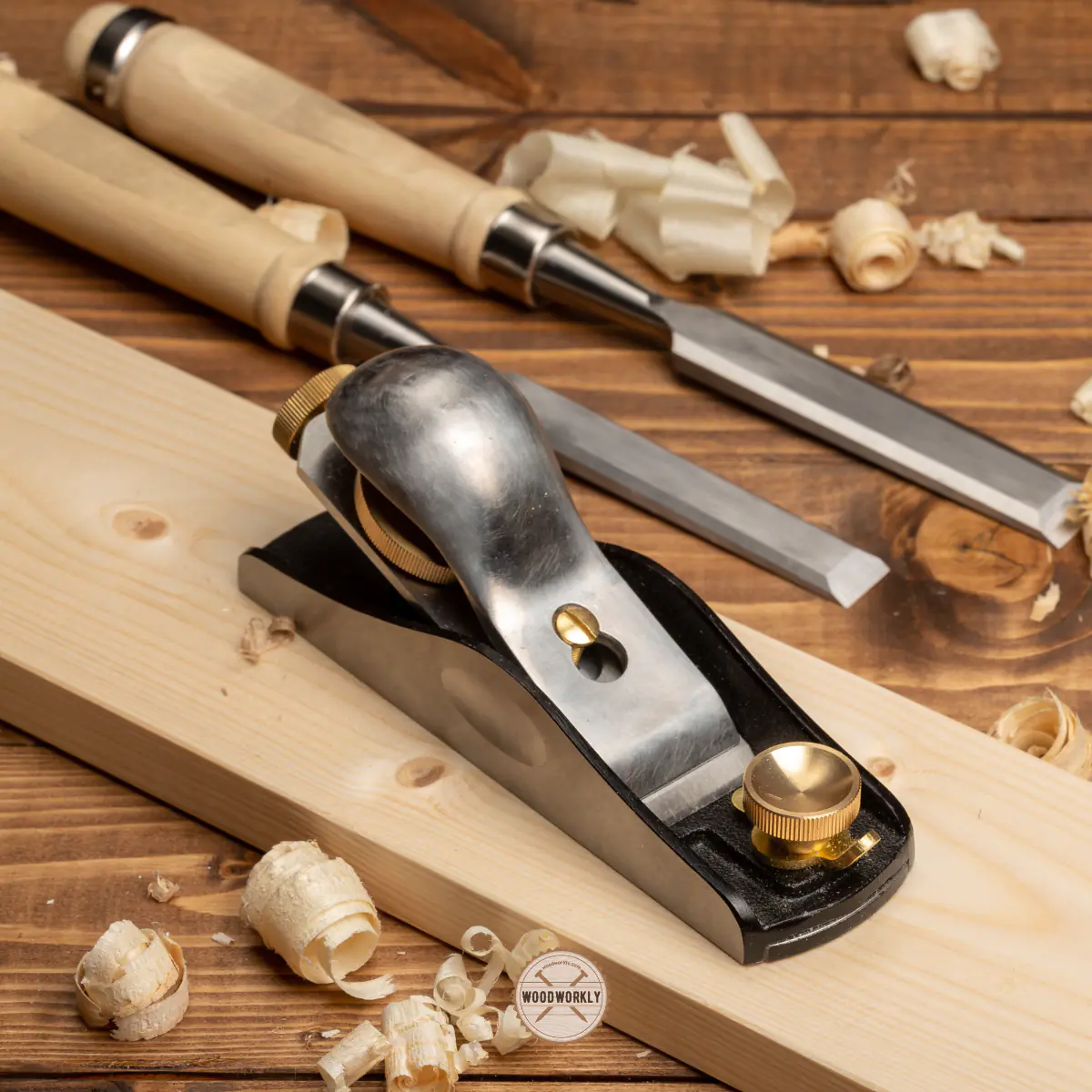
13. Joining Planes
Joining planes act like jack planes. They are useful to make the surface smooth and to join pieces together.
Joining planes are also used to flatten the surfaces of large boards and straighten the edges of the board.
Joining planes have long lengths which are useful to go through uneven surfaces by skimming off the random spots to make it smoother and flatter.
Most joining planes are 20 -24 inches long and made from wooden bodies. Joining planes made from metal bodies has higher durability than the ones made of wooden bodies.
Here’re some common functions of joining planes,
- Able to make smooth cuts
- Able to join wood pieces together
- Flatten and smoothen the surface
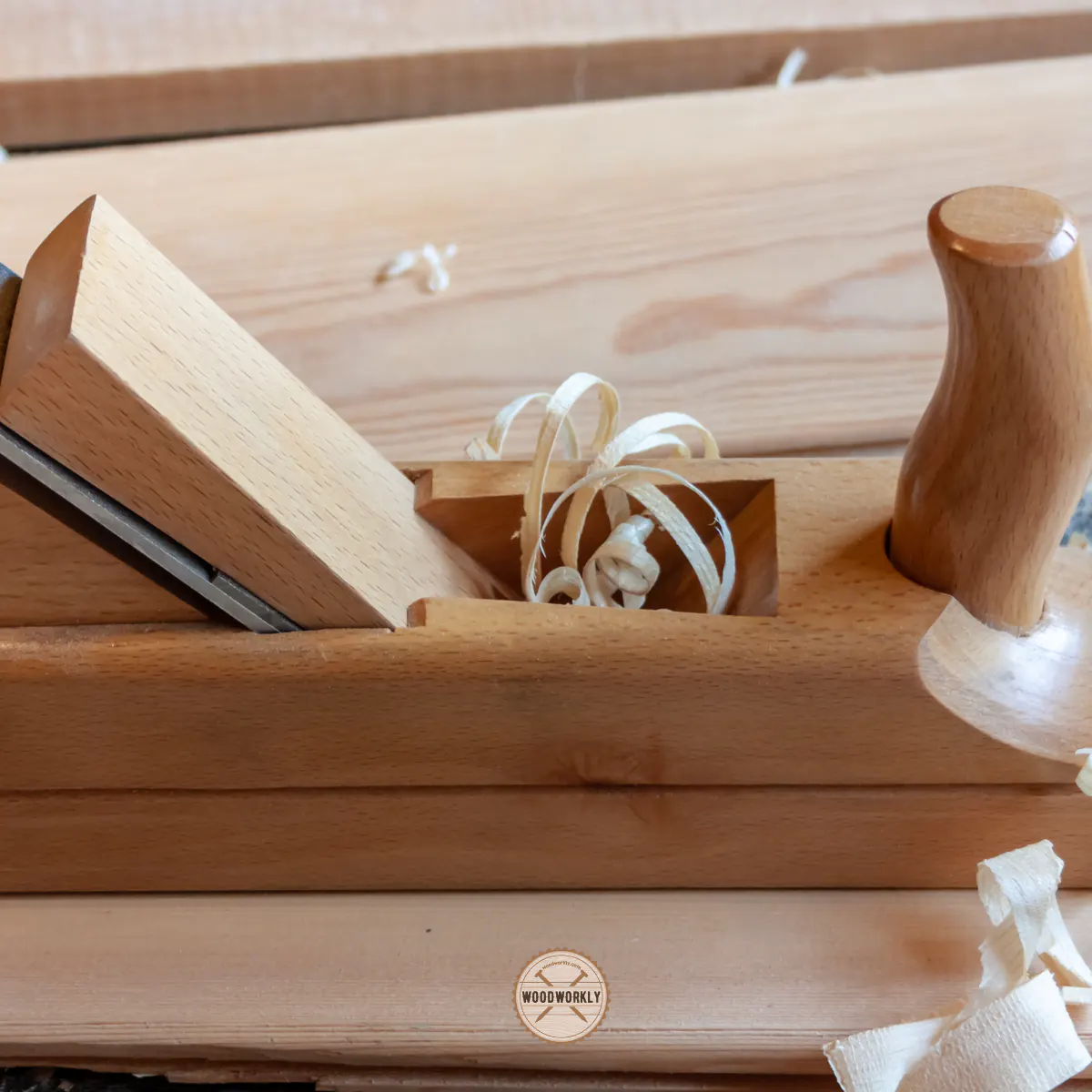
14. Rabbet Planes
Rabbit planes are useful to cut right angles along the direction of the wood grain. it is designed to make fine-tune rabbets.
There’re main two types of rabbet planes available in the market. Such as the skew rabbet plane and adjustable rabbet plane.
Both have similar features but plane iron is bedded in a skew rabbet plane. This will reduce the cutting angle and make the slicing neat and easy along the wood grain.
The adjustable mouth open option Is available in both the skew rabbet plane and the adjustable rabbet plane.
Here’re some common functions of rabbet planes,
- Able to cut along the direction of wood grain
- Useful to make fine-tune rabbets
- Useful to clean grooves and dados.
- Comfortability and workability are so high which is important for beginners in woodworking.
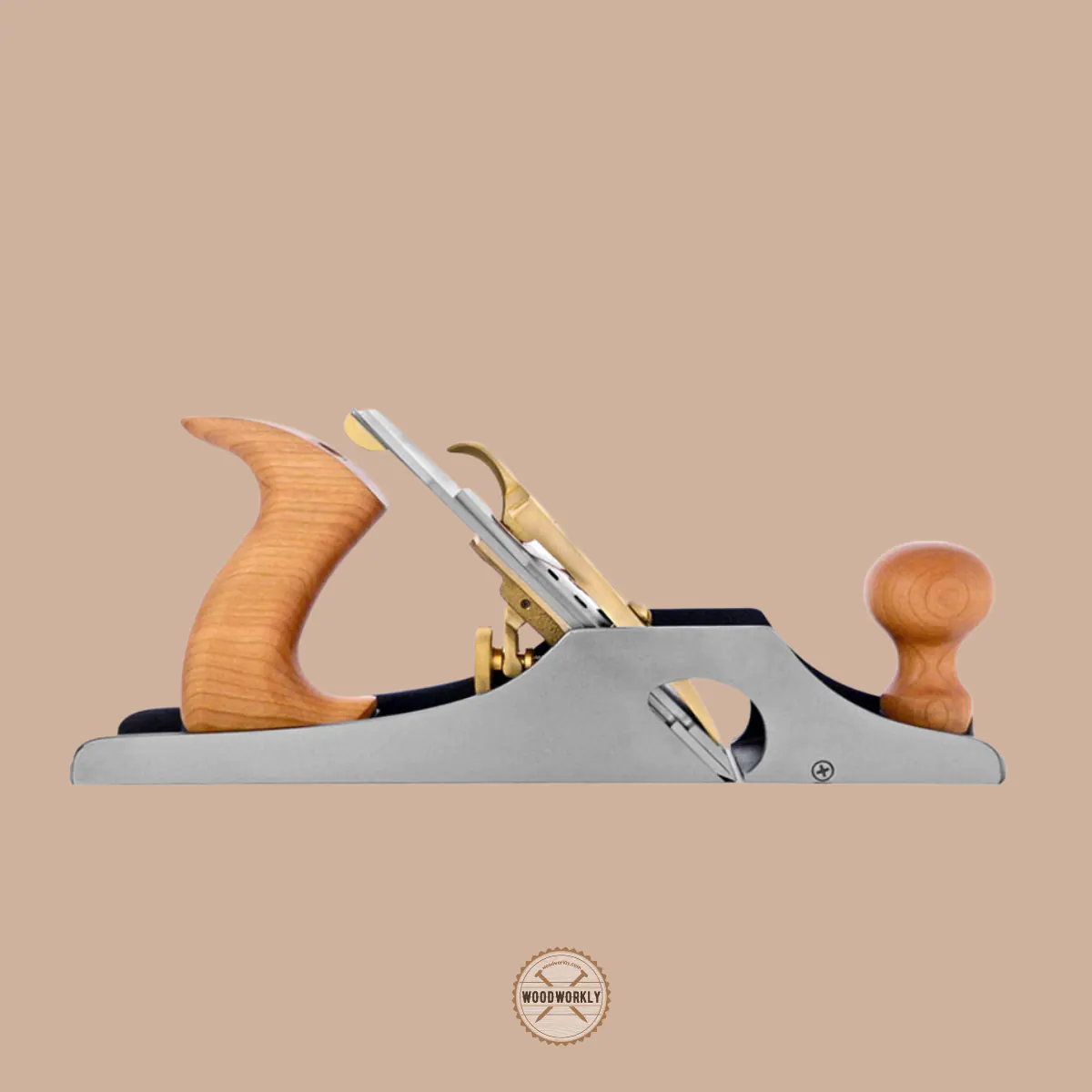
15. Scraper Planes
Scraper planes are used to put the final finish on wooden surfaces. With scrapper planes, you’ll be able to clean up all the messes that happened due to other types of planes.
It is small and very comfortable to use and doesn’t tear off the wood.
Scraper plane is made from fine wood fibers which are also known as cabinet scrapers.
With scraper planes, you can get a super smooth surface rather than using any sandpapers.
Sharpening is the difficult part of scarper planes. Having an angular blade angle makes it easy to deform or burnish into an aggressive hook or burr.
Normally scraper planes come into action after the surface has been prepared with a smoothing plane.
With a scraper plane, you’ll be able to bring out the wood grain rather than sandpaper would.
Here’re some common functions of scraper planes,
- Able to super-smooth surfaces
- Able to take thin curls
- Can use for final leveling and smoothing

16. Spokeshaves
Spokeshaves are specially designed for curved surfaces. For curved surfaces, spokeshaves perform different tasks like smoothing the edges to sharping spindles
There’re main two types of spokeshaves available in the market. They are the bevel-up version and the bevel-down version.
Bevel-down spokeshaves are the common ones that are useful for steep cutting and fine shaving.
Here’re some common functions of spokeshaves,
- Smoothen the curved surfaces
- Useful when making cartwheel spokes, chair legs, bows, arrows, and paddles
- Flatten complex shapes of wood
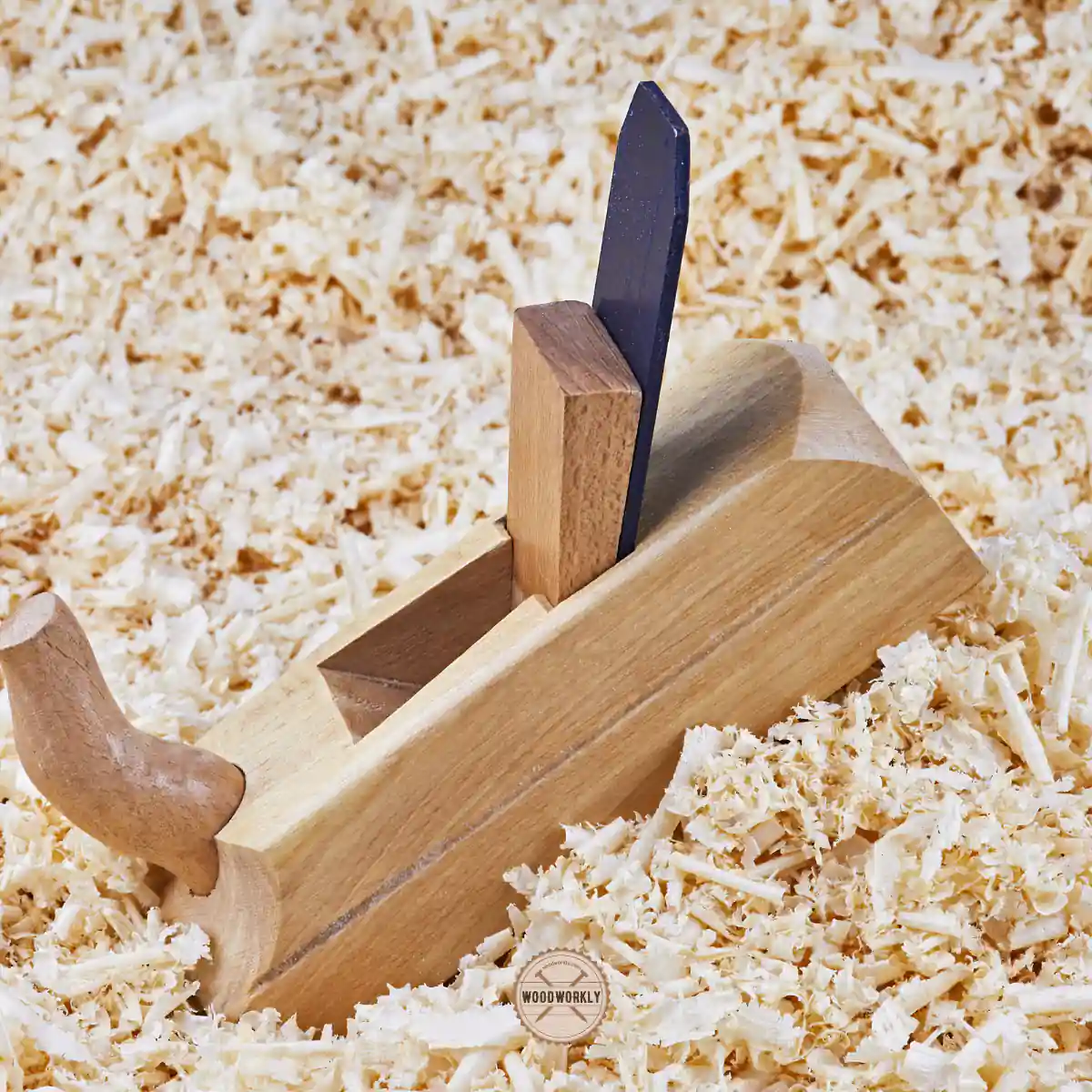
17. Finishing Hammers
Hammer is a universal woodworking tool that every woodworker should have. The main tasks of the hammer are to pound and pry.
Even though hammers are specialized for only two tasks, the way that accomplish depends on several things. Such as,
- Hammerhead design size and weight
- Claw design length and curve
- Total weight
- Handling
When it comes to finishing hammers, they are pretty much useful for any task, and they’ll be your first choice as a beginner when it comes to hammer selection. They are so handy and easy to use.
The finish hammer is a lightweight smooth-faced tool that is useful when driving nails, and tacks.
Finishing hammers are perfect for small woodworking projects as they weigh only about 10 -14 ounces.
Here’re some common functions of finishing hammers,
- Able to drive nails and tacks
- Useful when installing cabinets, doors, and handrails
- Able to drive 4d to 8d finish nails and box nails
Under beginner woodworking hand tools, let’s jump into framing hammers with their uses.

18. Framing Hammers
Framing hammers are useful for tough purposes. It is huge and important in larger woodworking projects like driving and removing large nails.
Framing hammers weigh around 20 – 30 once and have long handles.
If you’re a beginner in woodworking you need to have good practice with finishing hammers before moving into framing hammers. Because the handling is quite difficult especially when you’re a beginner.
The heavyweight and long handles of the framing hammer are important to give more power to the hammer stroke.
The Hammerhead is big and milled with a waffle-like grid which uses useful to prevent glancing blows.
Nowadays framing hammers are replacing with nail guns because of their difficulties when used.
But framing hammers are still able to teach pretty good woodworking lessons for any woodworker which will be helpful in their future projects.
Here’re some common functions of framing hammers,
- Useful for larger woodworking projects
- Able to drive large, long nails
- Powerful stroke is important for heavy carpentry work
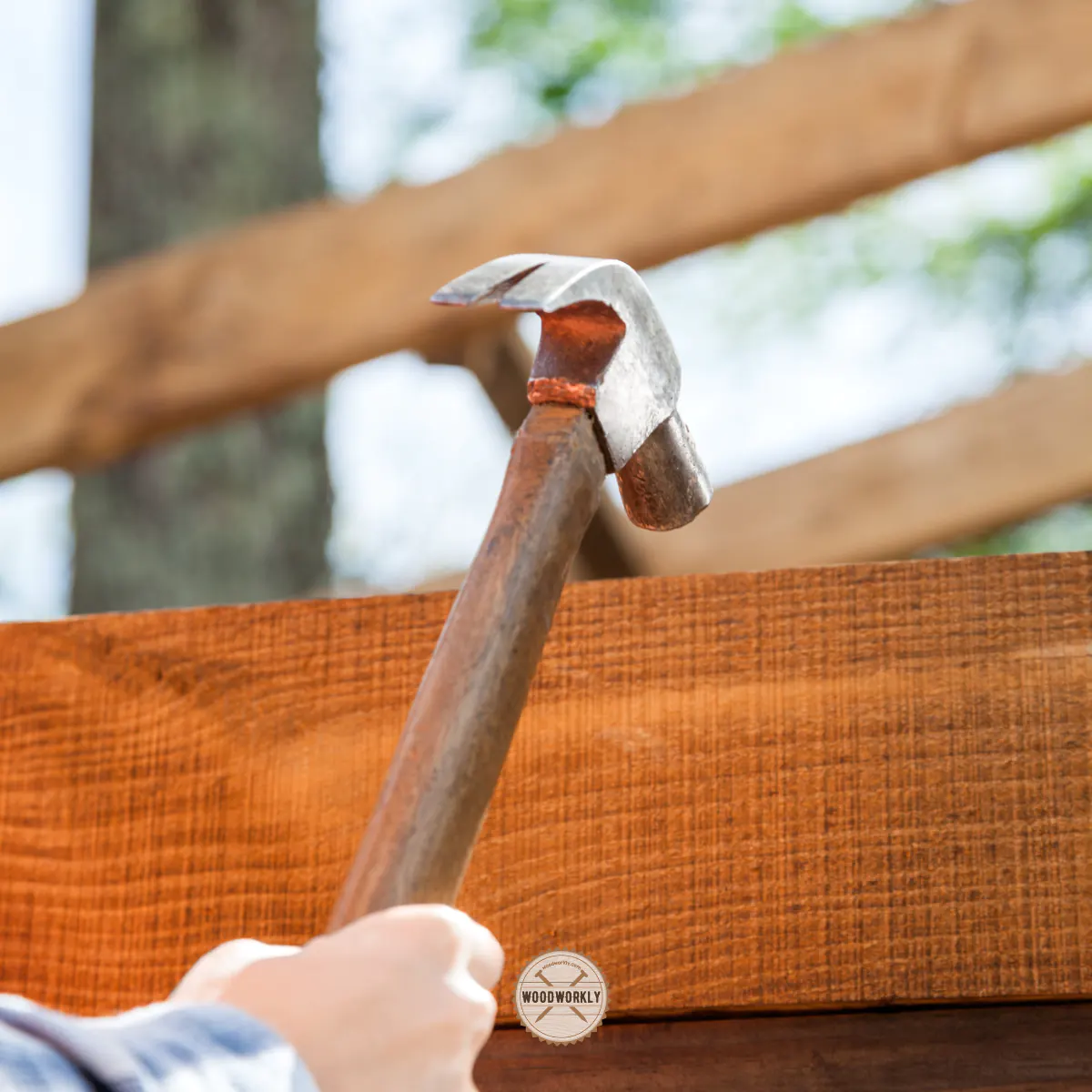
19. Tack Hammers
Tack hammers don’t have claws and are useful for small woodworking projects.
It is super light in weight and useful for furniture frame making by securing upholstery fabric using small nails or tacks.
Tack hammers are usually available in two faces. Most of them are magnetized and those heads are useful to drive nails with precision.
The tack hammer weighs around 5 to 8 ounces and the handle is nearly 10 inches long.
It is so much more difficult to drive small nails and tacks using a regular hammer which can cause the breaking of nails and surfaces.
But with tack hammers, you’ll be able to drive nails and tacks with greater precision.
Here’re some common functions of tack hammers,
- Able to drive small nails and tacks
- Useful for small woodworking projects
- Use to make seats, chairs, and soft padding
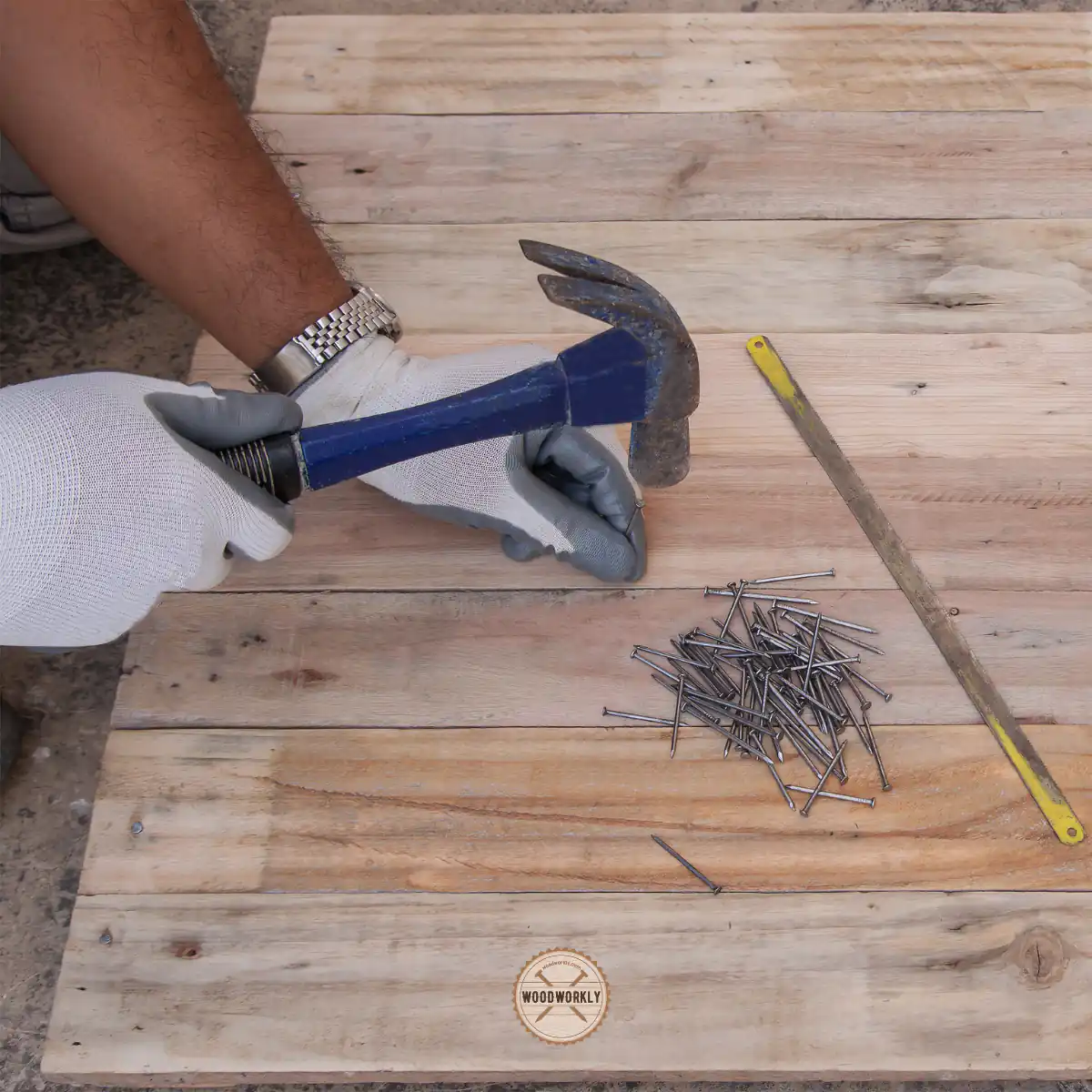
20. Hand Files
Hand files are used to shape and smoothen the wood. they are inexpensive and easy to use.
If you’re a beginner in woodworking hand files are great tools to learn lots of techniques in woodworking.
Because of having quality steel, the durability of hand files is high but once the steel turns dull, better to replace it with a new one rather than sharpening.
There’re several hand fly types available in the market. They’re
- Rasps with rough-edged tools
- Half-round flies
- Mill files
Hand files are also used to sharpen woodworking blades and other materials. They have fine teeth made of high-grade steel.
Here’re some common functions of hand files hammers,
- Use to shape and smooth the wood
- Use to sharpen woodworking blades
- Useful to sharpen both straight and curved surfaces

21. Mallet
Both mallets and hammers are striking tools, but mallets are useful for totally different applications than hammers. The striking shock of the mallet absorbs itself than delivers it to the outside.
Mallet is soft and leaves less striking marks than hammers do.
Because of its shock absorbance, the mallet is a perfect woodworking hand tool for tapping wood joints together with minimal striking marks.
Never use steel hammers on chisels. Leave the job for mallets because it let them smoothly slice through the wood.
Here’re some common functions of the mallet,
- Useful to tap wood joints together
- Able to do the functions with minimal strike marks
- Useful when working with chisels to prevent jabbing at the wood.
Under beginner woodworking hand tools, let’s jump into a chisel set with its uses.
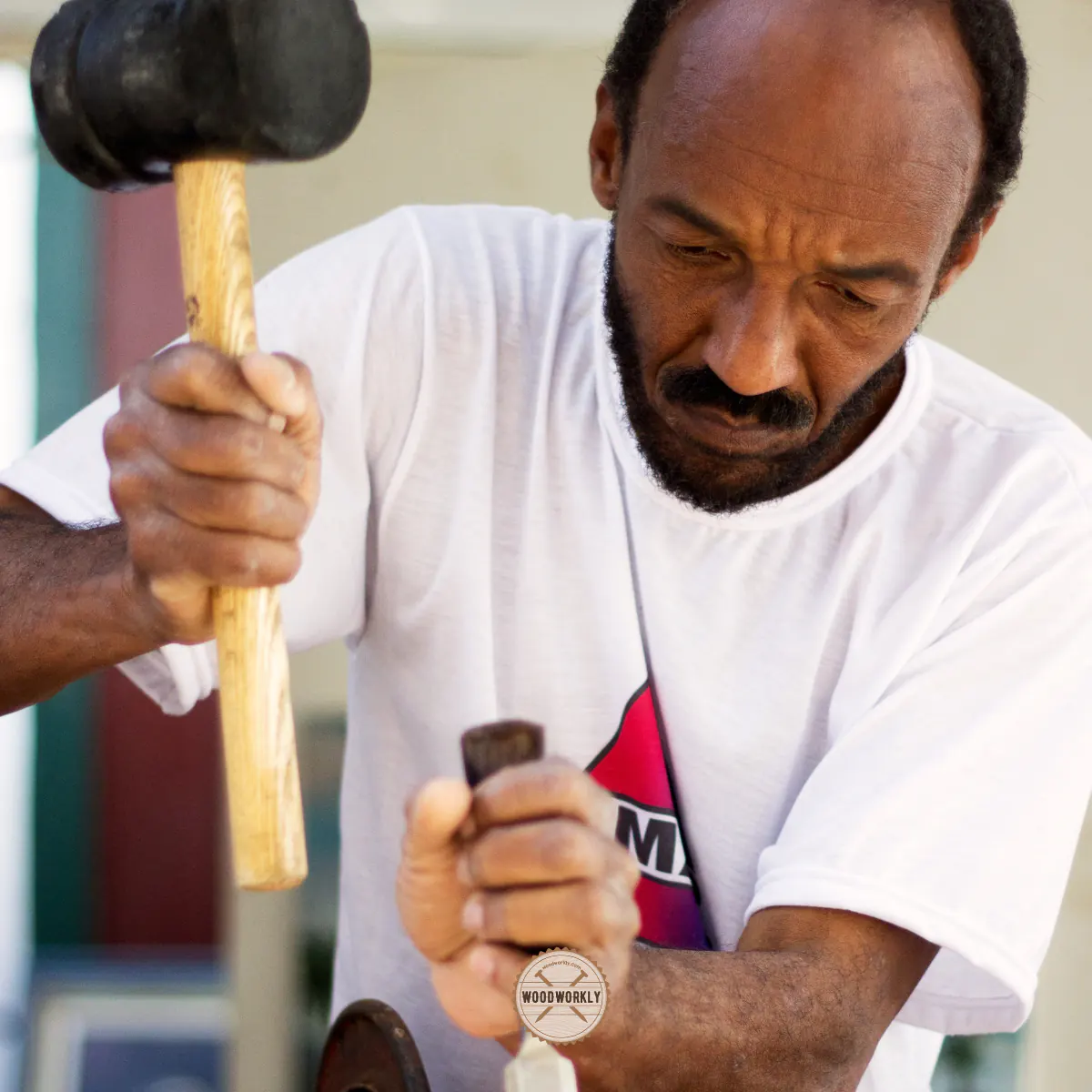
22. Chisel set
Chisels can be used for shaping, joinery, carving, paring, and many more woodworking activities.
Selecting a quality set of 6 chisels is a challenging task because most of the chisels available in the market are junk and frustrating to work with.
A quality set of 6 chisels improve the quality of your woodworking project by teaching you many woodworking skills.
I recommend bevel chisels for beginners in woodworking to get an idea about how to use chisels and how to sharpen them correctly.
Here is a chisel set I personally recommend and use for my day today woodworking projects.
Because bench chisels and mortise chisels are so unique and the learning range is narrow.
Here’re some common functions of chisels,
- Able to join wood pieces together
- Shaping wood surfaces
- Useful in carving and other decorative purposes

23. Sharpening Tools
Sharpening tools are essential to use woodworking tools over the years. All cutting tools in woodworking will lose their edges over years.
Therefore, you need to have good knowledge about how the sharpen them even If you’re a beginner in woodworking.
When it comes to sharpening stones, water stones and diamond plates are the popular ones.
If you’re on a tight budget I recommend buying water stones, because diamond ones are expensive.
Those sharpening mediums will last over the years and are able to sharpen any woodworking tools as you expect.
Here’re some common functions of Sharpening tools,
- Flatten and sharpen chisels
- Sharpen planes with ease
- Useful to keep woodworking tools fresh as new over the years
Under beginner woodworking hand tools, let’s jump into squares with their uses.

24. Squares
Squares are useful for a quality woodworking project to create and verify angles.
Squares have measuring that marked on their surface which is pretty much useful to make woodworking projects with correct coordinates.
Here’re some common square types that use in woodworking with their applications.
| Square Type | Application |
| Try square | Able to verify squareness quickly |
| Combination square | Able to make precise angles and distances |
| Speed square | Able to check 45- and 90-degree angles quickly |
| Miter square | Useful for angled miter cuts |
| Framing square | Useful for bigger woodworking projects for correct angles |
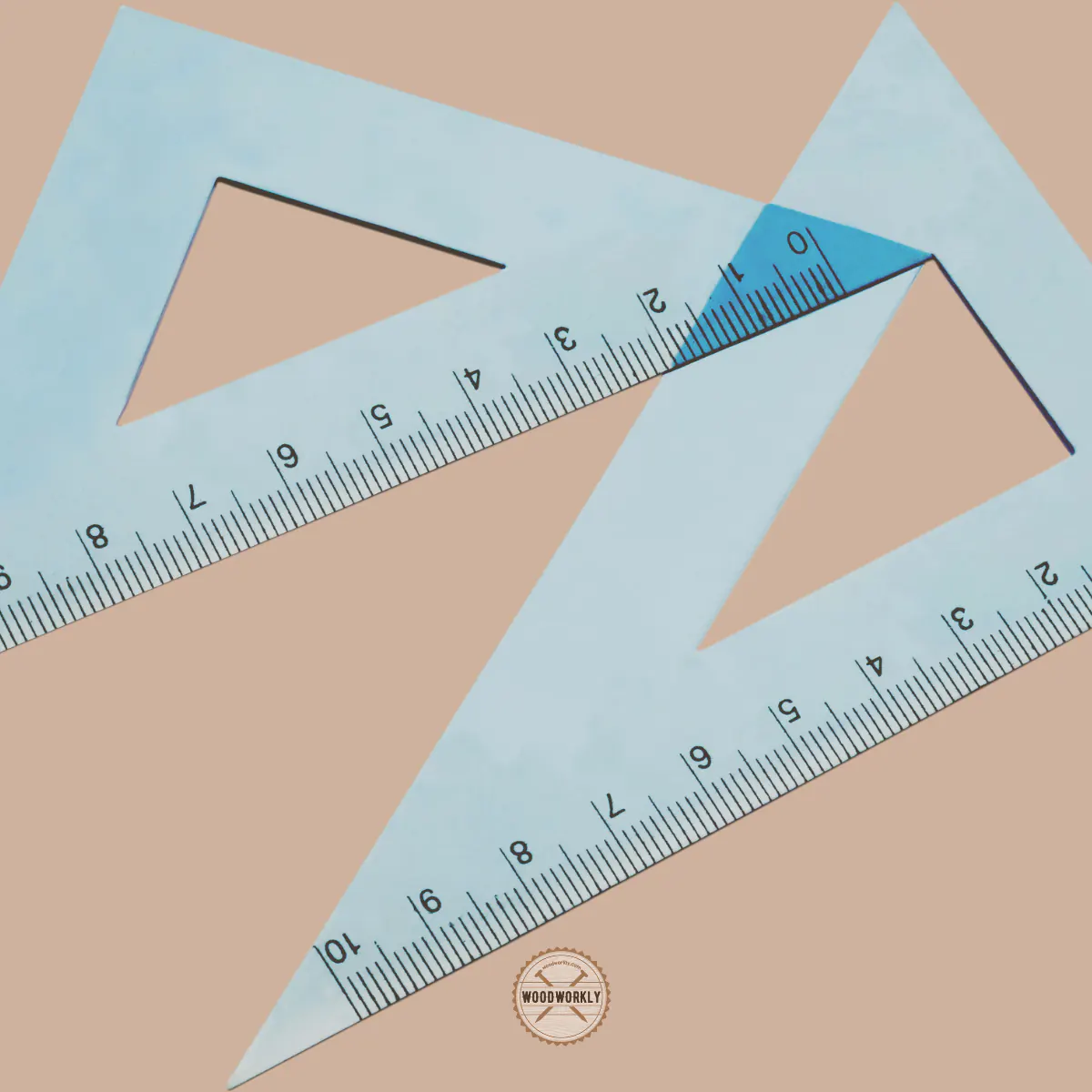
25. Tape Measures
Every woodworker should have a measuring tape hooked in the belt. They’re useful to measure distance or size.
It is a beginner woodworking hand tool that requires most of the time for different purposes.
Here’re some tape measures that woodworkers use for different woodworking activities.
- Retractable steel tape
- Folding rules
- Flexible tape
The retractable steel tape is the common one that comes in lengths from 12 to 30 feet.
Measuring tapes are useful for both small and large woodworking projects to get the shape, size, and distances we wish.
STANLEY FATMAX is the tape that I currently use which has excelled accuracy and high durability.

So, that’s all about beginner woodworking hand tools. Hope I have covered everything you wanted to know from A to Z.
Check out Innovative Woodworking Tools That Will Change How You Work
Let’s answer some frequently asked questions as well.
FAQs
Why should beginners start with hand tools in woodworking?
Starting with hand tools allows beginners to master basic woodworking techniques, understand the nature of wood, and gain experience before moving on to power tools. Hand tools offer precise control and foster a deeper connection to the craft.
What is the significance of different types of handsaws?
Different types of handsaws, such as ripping, crosscut, and combination handsaws, are designed for different cuts. For instance, a ripping saw is used for cutting along the grain of the wood, while a crosscut saw is used for cutting across the grain.
Why are planes important in woodworking?
Planes, including jack, block, joining, rabbet, and scraper planes, are essential for shaping and smoothing wood. Each type of plane serves a specific purpose in the woodworking process, providing versatility and control.
What is the purpose of a spokeshave in woodworking?
A spokeshave is a woodworking tool that is primarily used for shaping and smoothing curved surfaces in wood. It is especially useful for intricate work where precision is paramount.
How essential is a chisel set for beginners in woodworking?
A chisel set is crucial for beginners as it allows for a range of work, from chopping and paring to shaping. They can carve intricate details and are key in creating joints.
What role does a mallet play in woodworking?
In woodworking, a mallet is used in conjunction with a chisel or other tool to apply controlled force. Unlike metal hammers, mallets don’t damage your tools and offer better control.
Why are sharpening tools important in a beginner’s toolkit?
Sharpening tools maintain the effectiveness of your hand tools. They ensure your tools are always in prime condition, which leads to better results and safer use.
Why are squares and tape measures important in woodworking?
Squares and tape measures are vital for accurate measurement and alignment in woodworking. They ensure precision in cuts and joints, which leads to professional-looking results.
How can a beginner determine which woodworking hand tools to buy first?
The choice of which tools to buy first depends on the type of project a beginner is undertaking. Understanding the purpose and function of each tool can guide a beginner in making this decision.

Did I cover all you wanted to know about: Beginner Woodworking Hand Tools
In this article, I have covered all you wanted to know about 25 beginner woodworking hand tools with their specialties, uses and how to use them, and many more.
If you’re a beginner in woodworking it’s good to know about every type of woodworking tool and how to use them.
It’s a quick learning process to become good at woodworking.
Essential beginner woodworking hand tools include various types of handsaws (ripping, crosscut, combination), planes (jack, block, joining, rabbet, scraper), a marking gauge, clamps, spokeshaves, hammers, hand files, a mallet, a chisel set, sharpening tools, squares, and tape measures. These tools provide foundational skills for woodworking beginners.
I highly recommend using the quality product when you’re buying woodworking hand tools because most of them are junk and it’s a nightmare to work with them.
Hope you have gained good knowledge about the best beginner woodworking hand tools that are important for every woodworker with various functions.
So, let’s begin your woodworking journey with new tools. Get the best out of those tools.
One day you’ll become a pro at woodworking. Have fun in woodworking!
Your home is valueble for me. Thanks!?This website is mostly a stroll-via for the entire info you wanted about this and didn’t know who to ask. Glimpse here, and you’ll undoubtedly discover it.